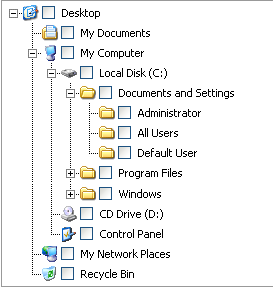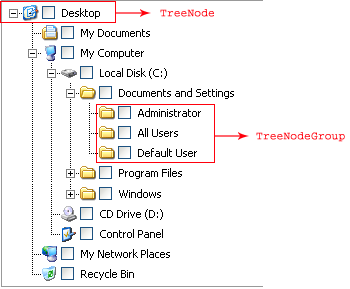Table of Contents
- Getting Started
- EO.Pdf
- EO.Web
- Overview
- Installation & Deployement
- EO.Web ToolTip
- EO.Web Rating
- EO.Web Slider & RangeSlider
- EO.Web ListBox
- EO.Web ComboBox
- EO.Web Captcha
- EO.Web ASPX To PDF
- EO.Web Slide
- EO.Web Flyout
- EO.Web EditableLabel
- EO.Web ImageZoom
- EO.Web Floater
- EO.Web Downloader
- EO.Web ColorPicker
- EO.Web HTML Editor
- EO.Web File Explorer
- EO.Web SpellChecker
- EO.Web Grid
- EO.Web MaskedEdit
- EO.Web Splitter
- EO.Web Menu
- EO.Web Slide Menu
- EO.Web TabStrip
- EO.Web TreeView
- EO.Web TreeView
- Overview
- Using EO.Web TreeView
- EO.Web Calendar
- EO.Web Callback
- EO.Web MultiPage
- EO.Web Dialog
- EO.Web AJAXUploader
- EO.Web ProgressBar - Free!
- EO.Web ToolBar - Free!
- EO.WebBrowser
- EO.Wpf
- Common Topics
- Reference
| Using TreeView |
Overview
A TreeView control is made up of a hierarchical structure of tree nodes. It inherits from BaseNavigator and shares the same concept of other navigation controls. Below is a picture of the built-in Explorer_WithCheckBox TreeView:

In order to design the appearance setting, you need to understand the difference between a TreeNode and a TreeNodeGroup so that you can decide proper CSS style settings on TreeNode and TreeNodeGroup.
TreeNode and TreeNodeGroup
A TreeNode can contain any of the following elements:
- An optional image associate with this TreeNode, represented by ImageUrl property;
-
An optional Checkbox displayed between the image and the TreeNode text,
represented by TreeView's CheckBoxImages
property.
- Text as the main content of the TreeView, represented by TreeNode's Text property
A TreeNodeGroup contains several TreeNodes. Below shows the area of TreeNode and TreeNodeGroup.

Using TreeView and MultiPage
To associate a TreeView with MultiPage, simply specify the MultiPageID property for the TreeView. By default, TreeNode automatically associates with the page view.
For example, setting TreeView1.MultiPageID to "MultiPage1" tells the TreeView to switch PageViews on MultiPage1. When user clicks on the first tab item, the first PageView of the MultiPage appears.
To explicitly associate a TreeNode with a PageView, set PageViewID to the ID of the PageView.

